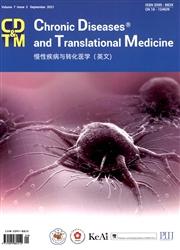Trend analysis of noncommunicable diseases and their risk factors in Afghanistan
Abstract
Background
Afghanistan is suffering from 40-year chronic conflicts, displacement, and demolition of its infrastructure. Afghanistan mortality survey 2010 shows nearly 46% of all deaths in the country were attributed to noncommunicable diseases (NCDs). In this study, we aimed to understand the differences in mortality and premature death due to NCDs by sex and the trend for the next 8 years.
Methods
We applied trend analysis using the secondary data from the Institute for Health Metrics and Evaluation, Global Burden of Diseases 2019. The information on NCD mortality, NCD deaths attributed to its risk factors, NCD percent of total years lived with disability (YLDs) attribution to each risk factor extracted from this database from 2008 to 2019. We investigated the trend from 2008 to 2019 for the mentioned factors and then forecast their trends until 2030.
Results
Our study shows that Afghanistan has had an increasing death number due to NCDs from 2008 to 2019 (50% for both sexes) and this will reach nearly 54% by 2030. Currently, half of NCDs deaths are premature in Afghanistan. The mortality rate and prevalence of risk factors are higher among women. More than 70% of YLDs will be due to NCDs in Afghanistan till 2030. Five risk factors including high systolic blood pressure (28.3%), high body mass index (23.4%), high blood glucose (20.6%), high low-density lipoprotein cholesterol (16.3%), and smoking (12.3%) will have the highest contribution to NCDs death in 2030, respectively.
Conclusions
In general, our study indicates that without any specific intervention to address NCDs in Afghanistan, not only the Sustainable Development Goal target for NCDs will not be met, but an increase in almost all risk factors prevalence, as well as NCD mortality, will be seen in Afghanistan.


 求助内容:
求助内容: 应助结果提醒方式:
应助结果提醒方式:


